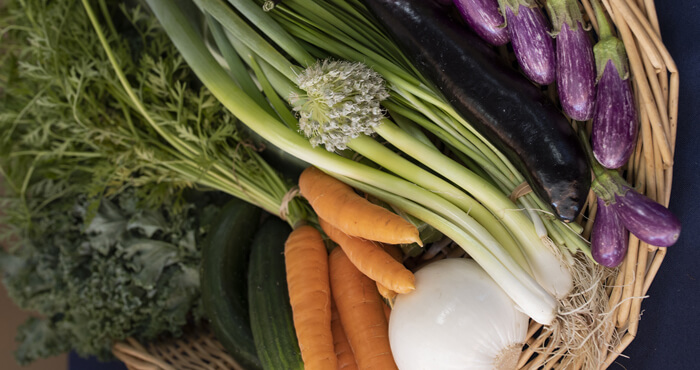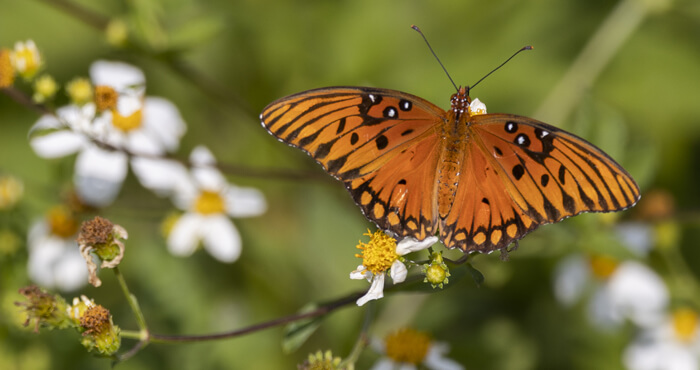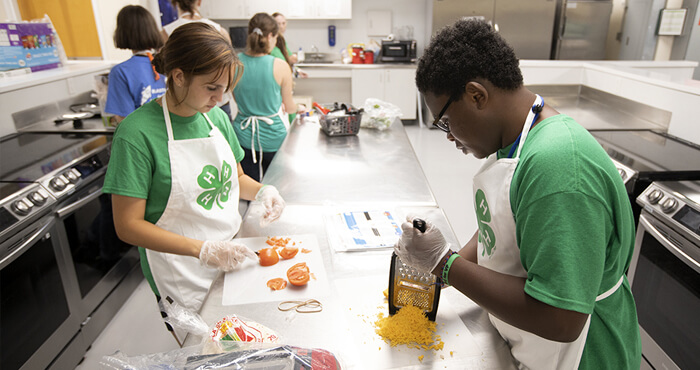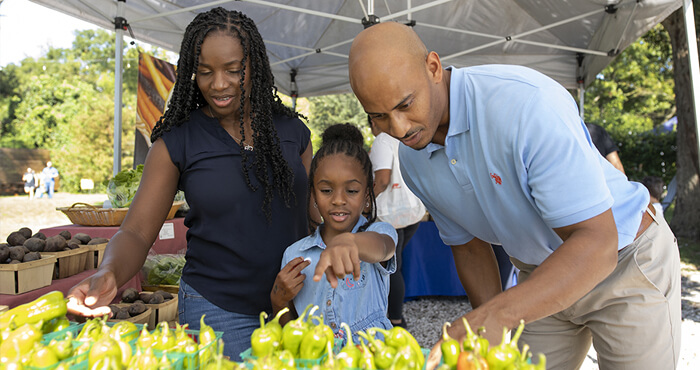
Strawberry Diseases
Botrytis Fruit Rot & Powdery Mildew
Diseases attack nearly all parts of strawberry plants, affecting both yields and quality. Botrytis fruit rot and powdery mildew are two major strawberry diseases in Florida. Here is advice on how to check your strawberry plants for these diseases and how to handle these diseases if your plants are affected.
Botrytis Fruit Rot
Botrytis fruit rot, also called gray mold, is caused by a fungus, Botrytis cinerea. In Florida, this fungus affects fruit before and after harvest, causing pre-harvest losses in the field and infection during storage and transit at refrigeration temperatures.
Symptoms
Strawberry flowers are highly susceptible to botrytis and may blight. However, symptoms usually are observed later on green and ripening fruit.
Lesions often develop on the stem end of the fruit and are caused by infected stamens or dead petals stuck to the fruit. Lesions start as small, firm, light brown spots.
During rainy or humid weather, lesions become covered with spores, ranging from tan to gray in color. Disturbing the fruit will release a large puff of visible spores. Botrytis spores can cover the entire fruit.
Development & Spread
Botrytis is common in nurseries and in dying vegetation around fields. After transplanting, spores on old dying leaves can colonize emerging leaves without visible symptoms. During January and February these spores are moved by air, water, and harvesters and infect strawberry flowers.
Lesions may not be seen on green and ripening fruit until about 2 to 4 weeks after infection.
As the epidemic progresses, diseased fruit and decayed flowers and pedicles become important sources of botrytis spores. In Florida, the second crop of strawberries that ripen in February and March is more affected than the first crop of strawberries that ripen in December and January.
Control
Botrytis fruit rot can be controlled by both chemical and cultural measures.
Cultural Practices
- Use resistant cultivars. Under Florida conditions, ‘Camarosa', 'Carmine', 'FL Radiance', and 'FL Elyana' are less susceptible than 'Strawberry Festival', 'Treasure', and 'Sweet Charlie'.
- Physically remove infected plant parts. Removing any dying leaves after establishment helps eliminate a potential infection source.
Fungicides
- Regularly apply a broad-spectrum protective fungicide. This suppresses disease when occurrence is low and prevents large early-season losses.
- Substitute fungicides with specific activity against botrytis fruit rot during the second peak bloom. These fungicide applications are critical during periods with mild temperatures and prolonged wetness from rain, fog, or dew.
Resume applications of protective fungicides after critical periods and in March, when the disease is naturally suppressed by hot weather.
Powdery Mildew
Powdery mildew, caused by Sphaerotheca macularis, infects the leaves, flowers, and fruit of strawberries.
Symptoms
Early infection symptoms include small white patches of fungus growing on lower leaf surfaces. The dense fungal growth and spore chains give these patches a powdery look. In some cultivars, there isn't much fungal mycelia growth, so the patches appear as yellow or reddish brown spots.
On heavily infected leaves, the edges curl upward.
If the fungus infects the flowers, it can produce malformed or aborted fruit.
Development & Spread
Powdery mildew often infects living, green strawberry leaves in the nursery, so transplants are the main infection source in the field.
Powdery mildew favors high humidity and temperatures in the 60º to 80º F range. Unlike botrytis, rain and irrigation discourage powdery mildew. Humid but dry conditions are found in greenhouses and tunnels where powdery mildew is usually more severe.
In open fields, powdery mildew is prevalent in November and December and reappears in late February and March.
Control
Cultural Practices
- Use disease-free transplants. Be aware that disease-free fields can still be infected by wind-blown fungus from neighboring fields.
- Survey fields early and regularly. Cultivars vary in levels of resistance. ‘Strawberry Festival’ and ‘Camarosa’ are highly susceptible to the disease.
Fungicides
- Apply fungicides at the first sign of disease. This is especially important when using protective fungicides such as elemental sulfur.
- Rotate fungicides to prevent resistance. Products with myclobutanil should be treated as a group since they have the same mode of action. Rotate them with other fungicides with different modes of action against powdery mildew.
Disease Prevention
In general, using the best quality transplants is a good way to prevent the introduction of diseases and pests into your strawberry fields. Strawberry pathogens can attack all plant parts and affect yield and quality. Infection by one pathogen often leads to infection by others, compounding the problem.
For more information on diseases other than botrytis fruit rot and powdery mildew, refer to "Florida Crop/Pest Management Profiles: Strawberry" or contact your local Extension agent.
Adapted and excerpted from:
J. Mertely and N. Torres, "Botrytis Fruit Rot or Gray Mold of Strawberry" (PP-230), Plant Pathology Department (07/2006).
RESOURCES
UF/IFAS Publications
- Agribusiness
- Agricultural Safety
- Agronomy
- Crops
- Florida Forage Handbook
- Fruits and Vegetables
- Livestock and Poultry
- Nurseries and Greenhouses
- Soil and Water
- Sustainable Agriculture
- Weed Management in Field Crops and Pasture Grasses (WMG)
State & Federal Agencies
- Florida Department of Agriculture and Consumer Services (FDACS)
- Fish and Wildlife Research Institute--Florida Fish and Wildlife Conservation Commission
- Florida Department of Environmental Protection
- South Florida Information Access (SOFIA)—U.S. Geological Survey
- U.S. Department of Agriculture (USDA)
- U.S. Forest Service--USDA
- U.S. Environmental Protection Agency (EPA)
- U.S. Fish & Wildlife Service
- U.S. Geological Survey (USGS)





.jpg)

.jpg)